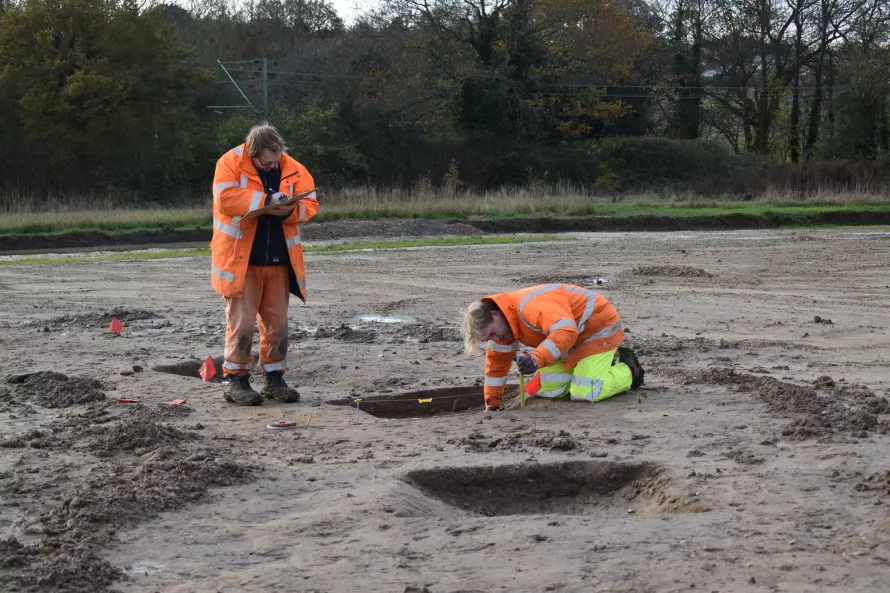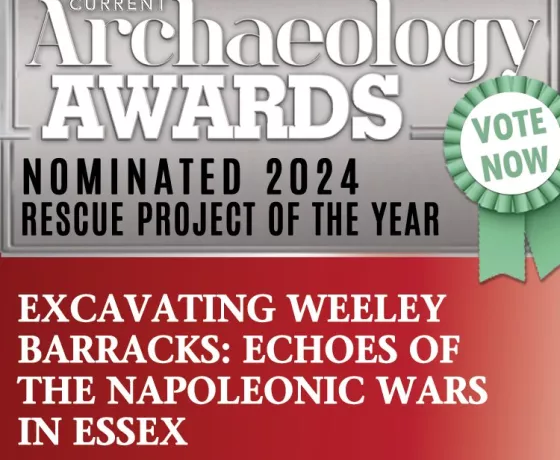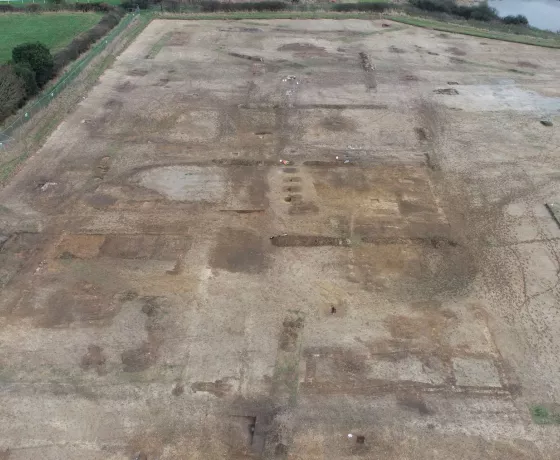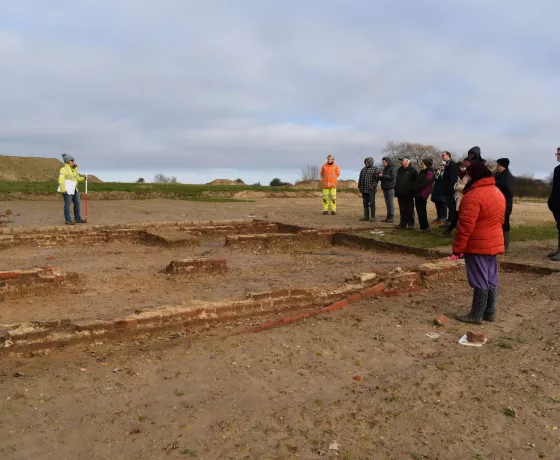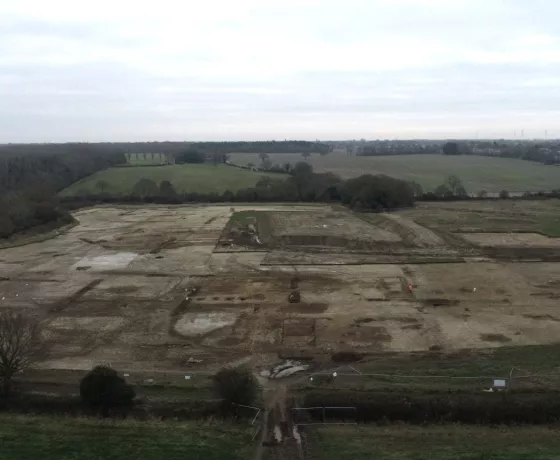The team is now focusing their efforts on a large building located in the north-eastern corner of the excavation area. The structure, which measures about 38m long and 20m wide, has five stone-built fireplaces attached to the external walls. This is interesting because all the other structures on the site are made from brick. This tells us two things – firstly, that the chimney stacks for these fireplaces would have been substantial to have necessitated such strong foundations, and secondly, that the people who built the barrack buildings had to transport in this non-local building stone. Due to the size of this building, it seems likely that there would have been internal partitions to create a series of small rooms, rather than it having been one large open space. We have identified a small number of fragmentary wall foundations within the building, but not very many. This would suggest that the internal walls were less substantial and probably build from wood.
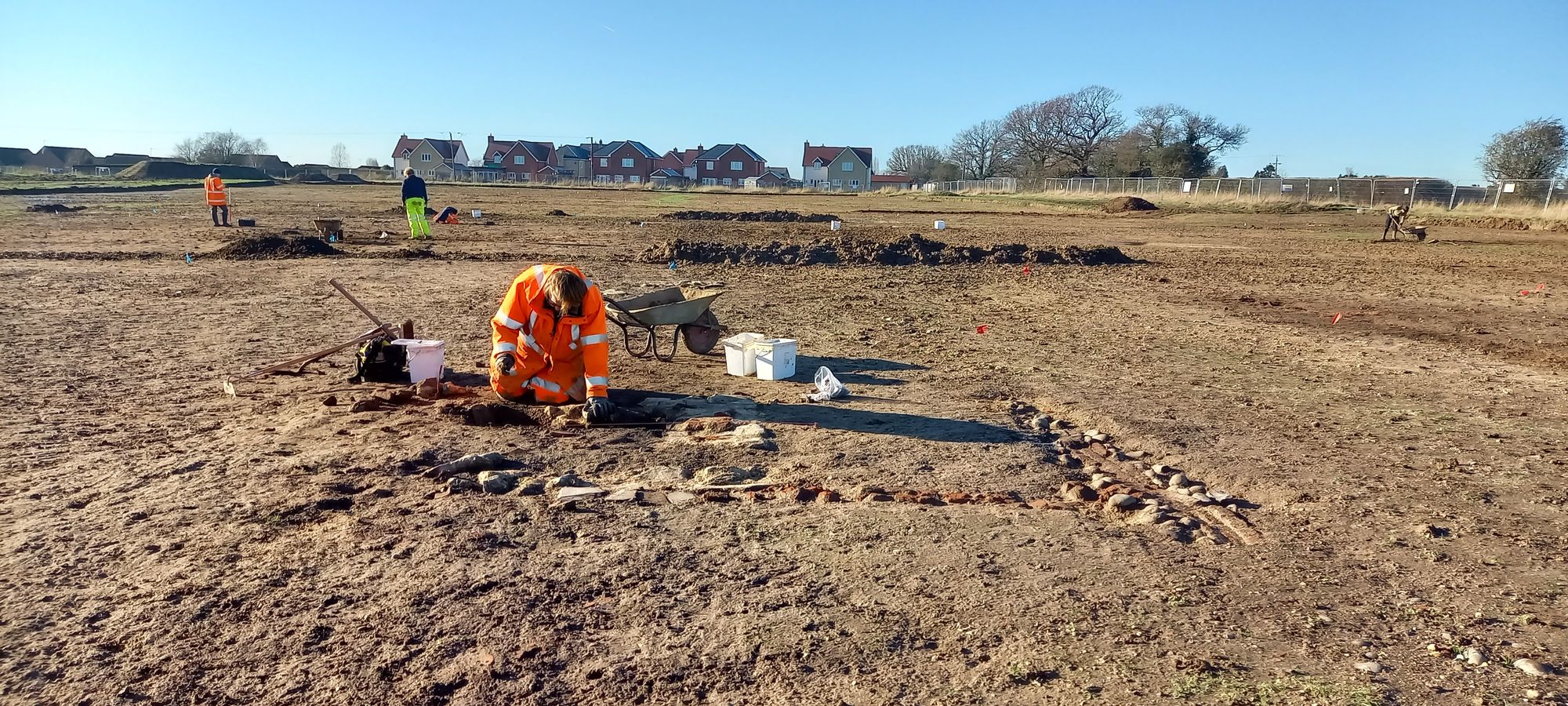
As well as bringing in the non-local stone for the fireplaces, we’ve starting to find some rather nice-looking tile gutters, which have two row of stone cobbles lined down each side of the gutter. Again, these cobbles would have to have been brought into the site as they are not naturally occurring in the area. It would also suggest that these gutters were visible to the occupants of the barracks – why else would you go to the effort of making them look so nice?!
Elsewhere on the site we’ve been cleaning up other building remains, including the above section of rather well-preserved wall foundation. You can clearly see the construction style of this wall, with its internal and external lines of brick facing and then the internal mortar. The variation in levels of preservation across the site is interesting – you can see from this photo that the segments of wall which lead off from this well-preserved bit are in a very poor state and basically completely lost. We’re not sure at the moment the reason behind this, but it could be something to do with functionality, with certain part of the wall need to be more substantial and to look nicer than other parts of the building.
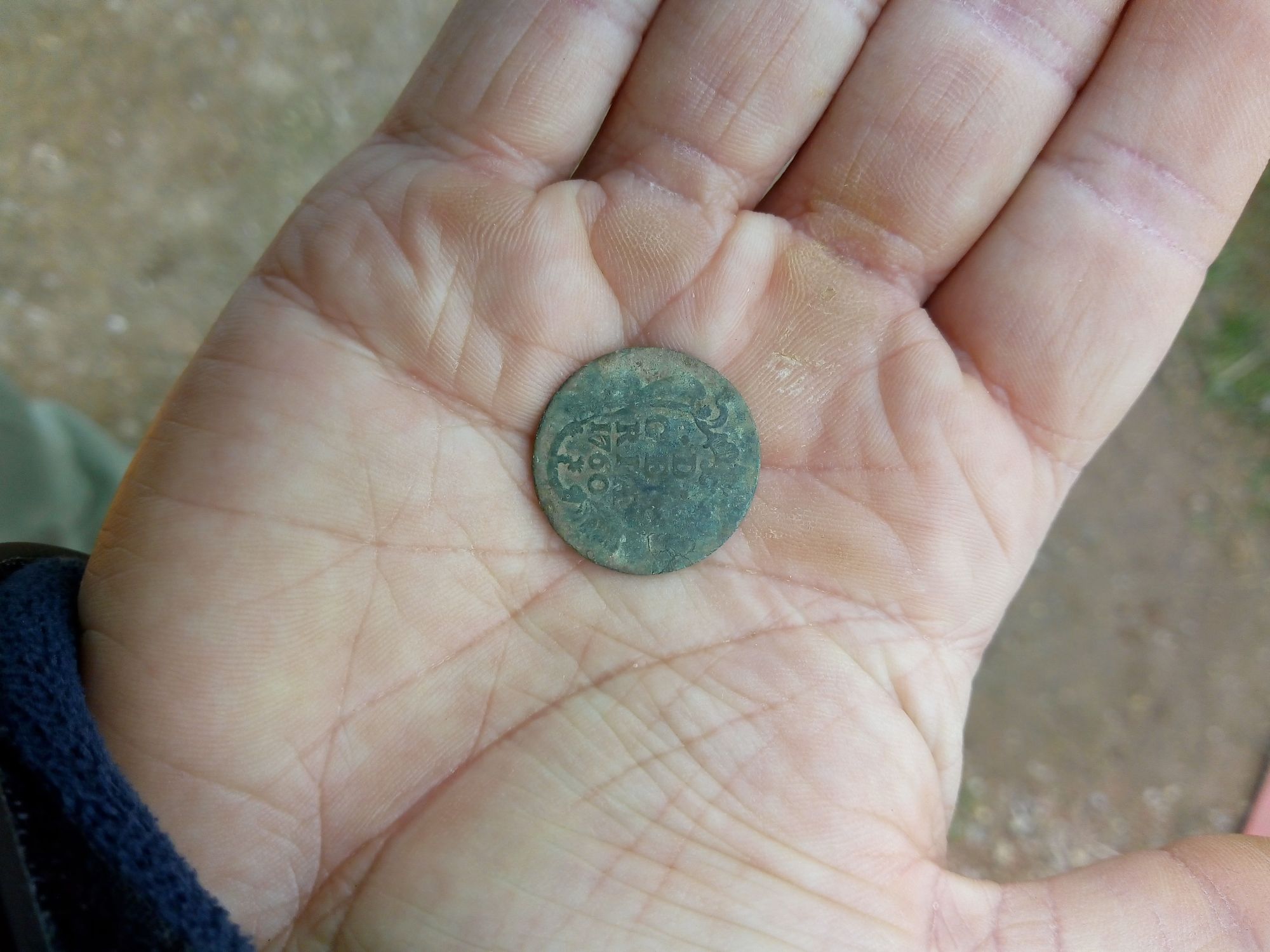
A button with a crest and the date 1760
We still have some nice finds coming up, several of which don’t appear to relate to the barracks themselves but are nonetheless interesting and add to rich history of the site. Above we have a button with a crest, several letters and the date 1760. So, this pre-dates the barracks.
We also have found part of the face and ear from a Staffordshire dog figurine. This particular example looks to be the classic Kings Charles spaniel. These were habitually placed on the mantlepiece of a lot of 19th century homes (and beyond – I certainly remember my granny having them above her fireplace).A
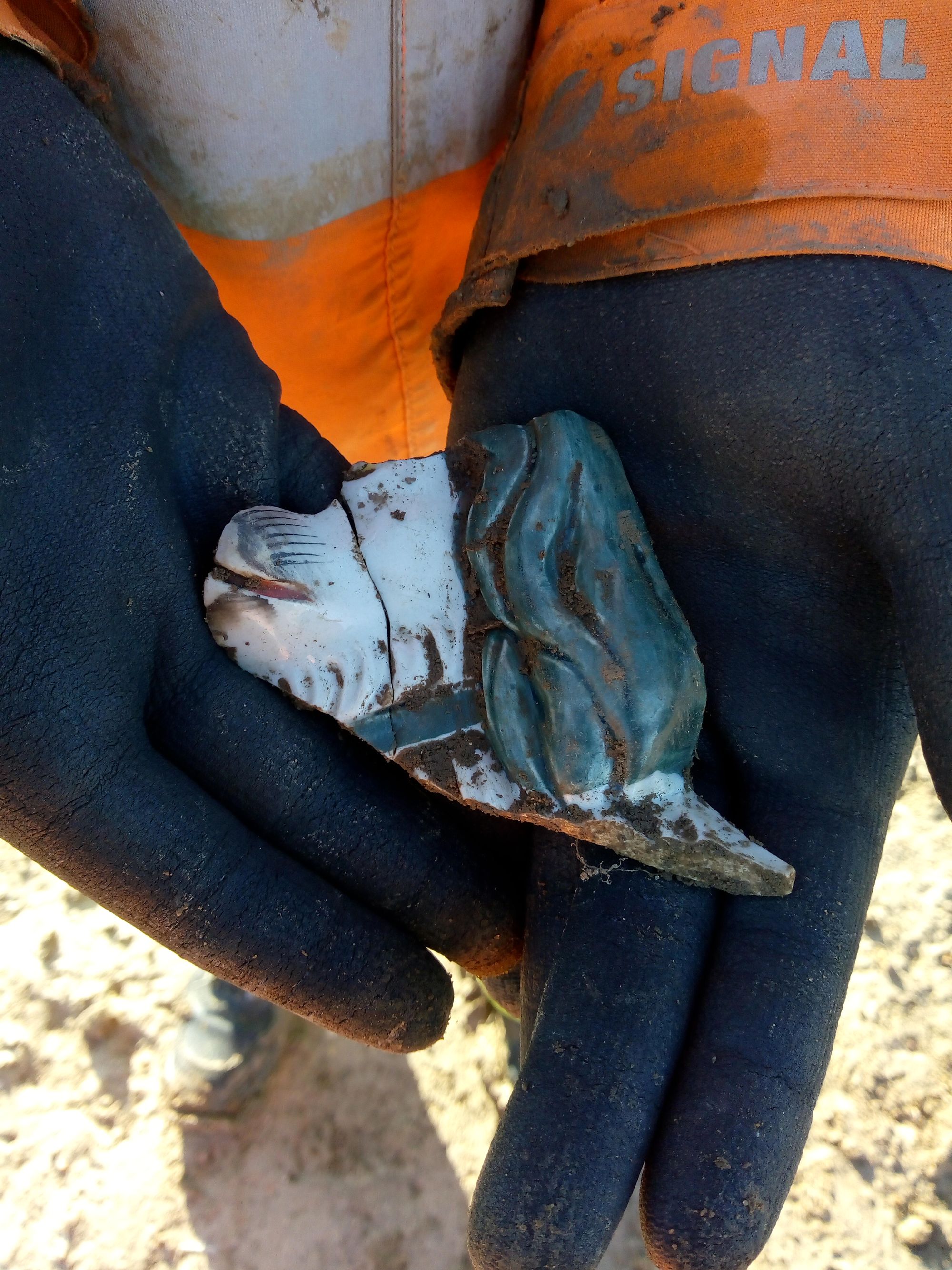
A fragment from a Staffordshire dog figurine
Other posts in this collection
Read our latest posts about the archaeological investigations at Weeley.

